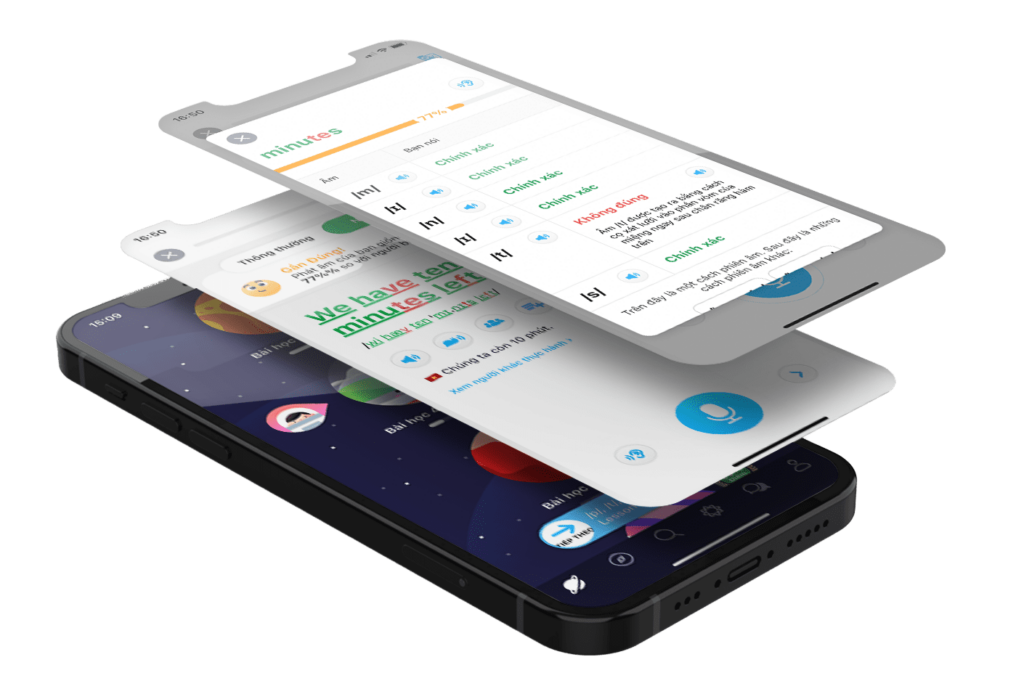This guest article was written by Krzl Light NunesAre you looking for ways to help your students pronounce their Vs and Zs right or to speak at a better pace? Whether you’re introducing new sounds or getting learners to stress words correctly, teaching English pronunciation may not always seem like a walk in the park. But don’t fret! There are many techniques and tools that you can use to teach English pronunciation and boost your students’ speaking confidence. Let’s take a look at some of the most effective strategies!
Recognizing a need for more pronunciation resources for English teachers, Bridge created the Micro-credential course in Teaching English Pronunciation, which provides targeted training to help teachers master the instructional techniques they need to teach this important skill.
Kiểm tra phát âm với bài tập sau:

1. Use the IPA chart.
When you teach English pronunciation, you may get questions like, “How do you pronounce the th sound?” or “How do you say son and sun?” For non-native English speakers, certain English sounds may be different or non-existent in their mother tongue. Thai students, for example, may struggle with pronouncing the letter r, while Spanish speakers don’t pronounce the letter h!

A useful tool for getting your students to recognize and produce English phonemes is the International Phonetic Alphabet (IPA) chart, which shows all of the 44 consonant and vowel sounds in the English language through different symbols. By using this chart, you can also show how to produce each phoneme through different mouth, tongue, and lip positions. For example, you can demonstrate how students can pronounce the /V/ sound by placing their top front teeth on their bottom lip and creating a vibration from their voice box.
Learn more about using the IPA chart by watching a clip from a recent BridgeUniverse Expert Series webinar, Teaching English Pronunciation: Understanding and Utilizing the IPA Chart.
2. Bust the myth that students should sound like native English speakers.
It’s not uncommon for ESL students to worry about speaking like an American or a British person to prove their fluency in the language. However, trying hard to eliminate one’s accent completely may lead to frustration or lack of confidence when speaking with native English speakers.
If you find your learners concerned over using a particular accent, remind them that speaking in English, or any language, boils down to being able to communicate and express their ideas well. You can also review that even native English speakers have varied accents, as the language is spoken in regions all around the world. So, instead of focusing on losing their accent, students can focus on articulating words and sentences with clarity so they can achieve the main goal of being understood by others.
3. Get certified to teach English pronunciation.
Do you want to teach English sounds, stress, and intonation effectively but you’re not sure where to start or what methods to use? A great way to gain skills and confidence in teaching pronunciation to ESL students is by getting training through specialized courses. For instance, Bridge offers a Micro-credential course in Teaching English Pronunciation. By taking this course, you’ll be able to:
- Find out the most common pronunciation-related struggles of English learners.
- Learn about the best techniques for helping your students enunciate words and say sentences correctly.
- Know the right tools to use and get ideas for activities to incorporate into your classes.
4. Make use of pronunciation apps.
So, you’ve done your pronunciation drills and reading exercises in class, but how can you make sure that your students can practice what they’ve learned once your lesson is over? You can encourage your learners to continue working on their speaking fluency through pronunciation apps that they can easily download on their mobile phones.
For instance, the ELSA Speak app can coach learners to help them improve their English-speaking skills. Using this app is also easy. First, ELSA Speak lets you record yourself while reading words or phrases. Afterward, the app evaluates how you’ve said them and gives you feedback and suggestions on how you can improve your pronunciation, grammar, and vocabulary. As an educational yet interactive tool, your students will be more engaged and keep progressing even outside the classroom!

5. Focus on word and sentence stress and intonation.
Another key to getting your ideas across effectively in English is how you emphasize words and vary your tone in sentences. After all, these affect how you convey meaning, express your emotions, and signal what you’re trying to communicate (e.g., are you stating something or asking a question).
As stress and intonation are equally important in students’ speaking skills, make sure that you don’t take these for granted in class! You can use a variety of techniques to train your students in saying words or sentences with the right stress and tone.
- You can apply the Total Physical Response (TPR) method, wherein you use physical movements to communicate with your students better or help them understand you while you speak.
- You can incorporate activities, such as role-plays or storytelling, that will get their intonation to change.
6. Address speaking speed.
Do you notice that your students are speaking too slowly because they’re overthinking their grammar structures? Or, perhaps they’re mispronouncing words because they’re talking too fast?
If your learners’ speaking pace gets in the way of them being understood, let them know that speaking clearly matters the most. You can also help them sound more comprehensible through various activities, like news reporting or class presentations. Additionally, you can provide them with inspiration by recommending that they listen to very good speakers and emulate their styles. For example, they can watch a TED Talk, famous historical speeches, or presentations at business conferences or formal events.
One of the first steps to getting your students to communicate in the English language well is by building their pronunciation skills. By following the tips above and taking a Micro-credential course in Teaching English Pronunciation, you can rest assured that you will lead your learners toward speaking in the clearest and most efficient way possible.
Bridge’s goal is to empower a global community of English teachers and support excellence in English language teaching. In addition to our accredited portfolio of TEFL courses, BridgeUniverse offers articles, teaching resources, webinars, and more!
 24/08/2022 | Admin
24/08/2022 | Admin










